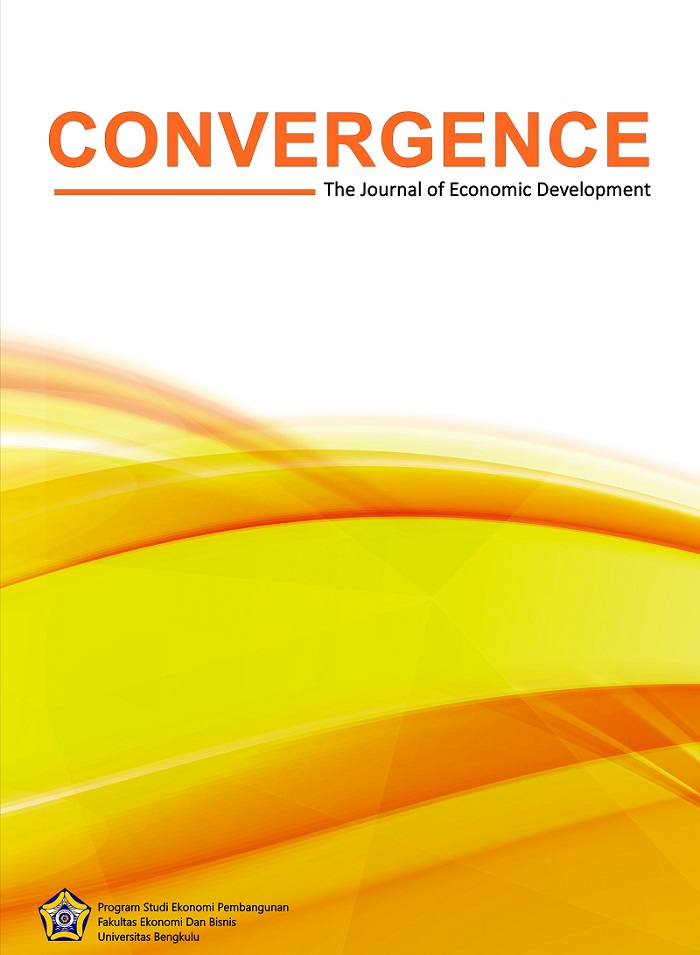Main Article Content
Abstract
This study aims to identify the physical and non-physical potential of Kamal Hamlet, Karangsari Village, examine the extent of community participation in the development of Kamal Tourism Hamlet Karangsari Village, then researchers will design a tourism village model based on local wisdom that can accelerate the development of Kamal Tourism Hamlet Karangsari Village so that the people can enjoy the results of their existence the Tourism Village. The type of research used in this research is descriptive qualitative. Sources of research data obtained from interviews, observation, and documentation in 2019. The data analysis technique used in this study is an interactive model. Based on the research results, the physical potential in Kamal Tourism Hamlet Karangsari Village is natural and cultural potential. While the non-physical potential is the Karangsari community involved in the development of a tourist village, the level of community education, land tenure of yards, fields, gardens and rice fields, as well as the main household income per month. The tourism development model that can be used in Kamal Tourism Hamlet Karangsari Tourism Village is a development model based on local wisdom, namely nature and culture based because Kamal Tourism Hamlet Karangsari Village has various natural and cultural potentials.
Keywords : Physical Potential1, Non-Physical Potential2, Community Participation3, Local Wisdom 4
Article Details
Copyright (c) 2023 Jurni Hayati, Iis Surgawati, Rahayuningrat Rahayuningrat

This work is licensed under a Creative Commons Attribution-ShareAlike 4.0 International License.
- This statement is a commitment from the author, to respect copyright, both in terms of quoting the work of others, as well as in the use of journal content.
- If needed, the author can send a statement of authenticity of the manuscript. With the receipt of an article by the Editor of Convergence: The Journal of Economic Development, the article submitted has the copyright held by Convergence: The Journal of Economic Development Convergence:
- The Journal of Economic Development has the right to reproduce and distribute articles that have been published in journals.
- The author is not permitted to publish the same article that has been published in this journal.
References
- Adikampana, I. M. (2012). Desa Wisata Berbasis Mayarakat Sebagai Model Pemberdayaan Masyarakat Di Desa Pinge. Jurnal Analisis Pariwisata, 12(1), 30-36. https://repositori.unud.ac.id/protected/storage/upload/repositori/ID1_19770224200112100219091308907analisis-pariwisata.pdf
- Asyari, H. (2010). Buku Pegangan Desa Wisata. Yogyakarta: Tourista.
- Desa Karangsari. (2019). Monografi Desa.
- Kementerian Kebudayaan Dan Pariwisata. (2011). Pedoman Program Nasional Pemberdayaan Masyarakat (PNPM) Mandiri Pariwisata.
- Mowforth, M. dan Munt, I. (2009). Tourism and Sustainability. London: Routledge.
- Nafila, O. (2013). Peran Komunitas Kreatif dalam Pengembangan Pariwisata Budaya di Situs Megalitikum Gunung Padang. Jurnal Perencanaan Wilayah dan Kota, 24(1), 65-80. https://doi.org/10.5614/jpwk.2013.24.1.5
- Patiyasa, I. W. (2013). Strategi Pengembangan Potensi Desa Menjadi Desa Wisata di Kabupaten Tabanan (Studi Kasus Desa Tegal Linggah, Penebel, Tabanan). Jurnal Ilmiah Hospitality Management, 4(1), 1-28.
- https://doi.org/10.22334/jihm.v4i1.48
- Pitana, I. G. dan Diarta, I. K. S. (2011). Pengantar Ilmu Pariwisata. Yogyakarta: Andi.
- Sidik, A.S. dan Fahmi, F. (2019). Pengembangan dan Pengelolaan Desa Wisata Pasar Pancingan di Desa Bilabante Kecamatan Pringgarata Lombok Tengah. J-ABDIPAMAS (Jurnal Pengabdian Kepada Masyarakat), 3(2), 11-16. https://ejurnal.ikippgribojonegoro.ac.id/index.php/J-ABDIPAMAS/article/view/572
- Sunaryo, B. (2013). Kebijakan Pembangunan Destinasi Pariwisata: Konsep dan Aplikasinya di Indonesia. Yogyakarta: Gava Media.
References
Adikampana, I. M. (2012). Desa Wisata Berbasis Mayarakat Sebagai Model Pemberdayaan Masyarakat Di Desa Pinge. Jurnal Analisis Pariwisata, 12(1), 30-36. https://repositori.unud.ac.id/protected/storage/upload/repositori/ID1_19770224200112100219091308907analisis-pariwisata.pdf
Asyari, H. (2010). Buku Pegangan Desa Wisata. Yogyakarta: Tourista.
Desa Karangsari. (2019). Monografi Desa.
Kementerian Kebudayaan Dan Pariwisata. (2011). Pedoman Program Nasional Pemberdayaan Masyarakat (PNPM) Mandiri Pariwisata.
Mowforth, M. dan Munt, I. (2009). Tourism and Sustainability. London: Routledge.
Nafila, O. (2013). Peran Komunitas Kreatif dalam Pengembangan Pariwisata Budaya di Situs Megalitikum Gunung Padang. Jurnal Perencanaan Wilayah dan Kota, 24(1), 65-80. https://doi.org/10.5614/jpwk.2013.24.1.5
Patiyasa, I. W. (2013). Strategi Pengembangan Potensi Desa Menjadi Desa Wisata di Kabupaten Tabanan (Studi Kasus Desa Tegal Linggah, Penebel, Tabanan). Jurnal Ilmiah Hospitality Management, 4(1), 1-28.
https://doi.org/10.22334/jihm.v4i1.48
Pitana, I. G. dan Diarta, I. K. S. (2011). Pengantar Ilmu Pariwisata. Yogyakarta: Andi.
Sidik, A.S. dan Fahmi, F. (2019). Pengembangan dan Pengelolaan Desa Wisata Pasar Pancingan di Desa Bilabante Kecamatan Pringgarata Lombok Tengah. J-ABDIPAMAS (Jurnal Pengabdian Kepada Masyarakat), 3(2), 11-16. https://ejurnal.ikippgribojonegoro.ac.id/index.php/J-ABDIPAMAS/article/view/572
Sunaryo, B. (2013). Kebijakan Pembangunan Destinasi Pariwisata: Konsep dan Aplikasinya di Indonesia. Yogyakarta: Gava Media.
